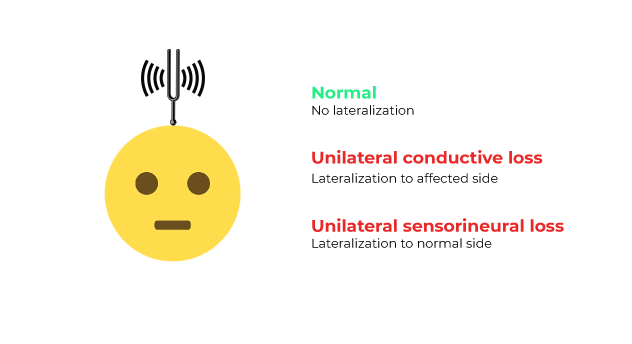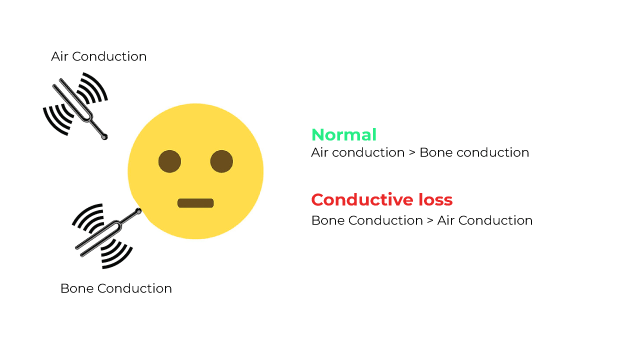Sensorineural vs. Conductive Hearing Loss
The use of the Weber and Rinne tests helps differentiate between sensorineural and conductive hearing loss. Sensorineural hearing loss can come from pathology involving the inner ear, cochlea or auditory nerve. Conductive hearing loss involves anything that impairs or blocks sound from the environment reaching your inner ear (such as a foreign body).
Weber Test
This test is performed by placing the tuning fork in the middle of the patient's forehead after it is struck. Depending on which side the patient hears the sound better, can help identify the type of hearing loss.

Rinne Test
This test is performed by first placing the vibrating tuning form of the mastoid bone. You ask the patient when they stop hearing the sound from the vibrations. You then place the vibrating tuning fork next to the patient's ear in the air and ask when they stop hearing the sound. Normally, the patient will hear the sound longer in the air vs. when place on their mastoid bone. When your patient hears the sound longer when the tuning form is placed on their bone, this is suggestive of a conductive hearing loss.

